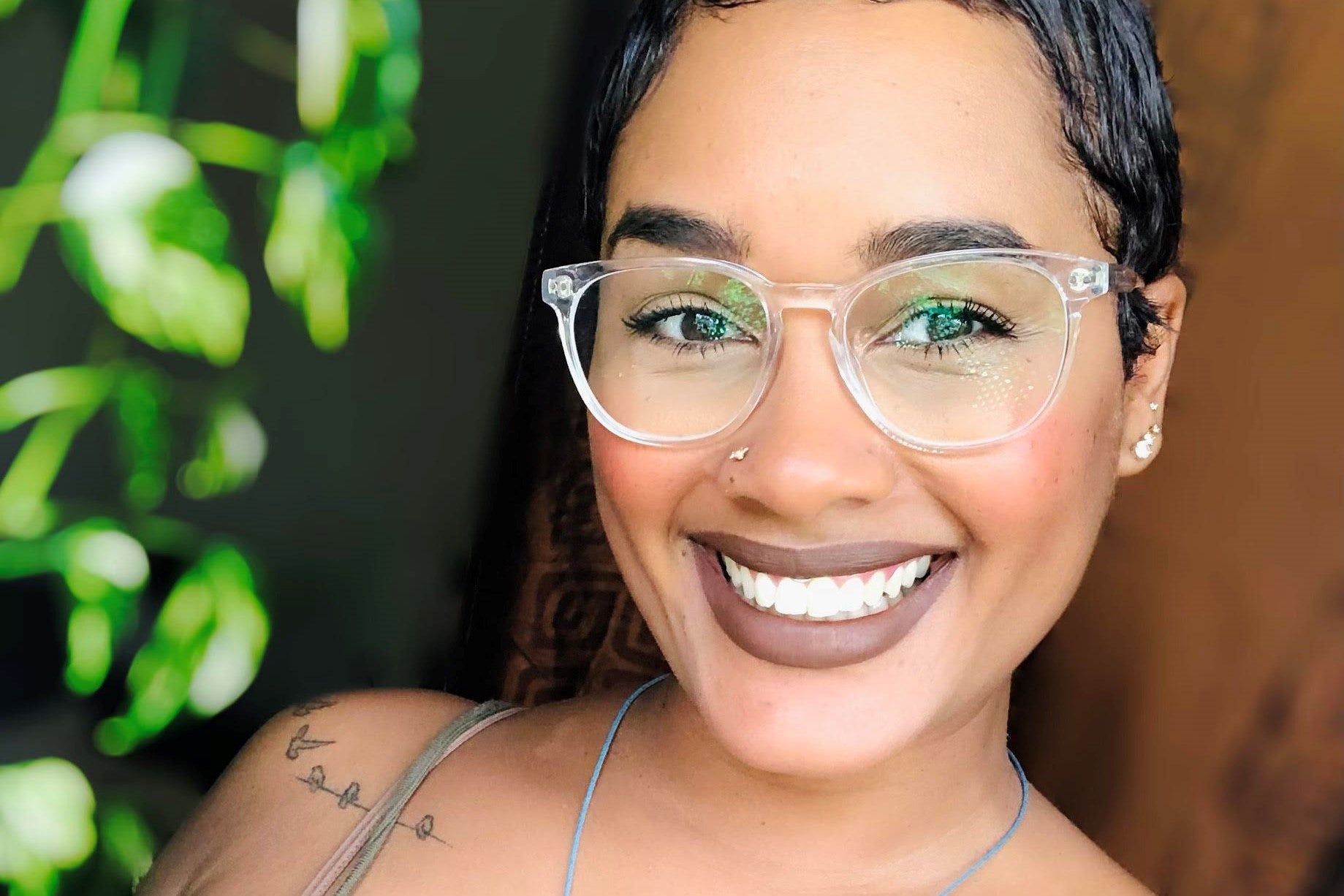Harmony Eyecare
The mission of Harmony Eyecare is to create an unforgettable eye care experience for every patient by providing unmatched customer service, comprehensive patient education, and superior product quality. Providing the highest quality lenses and craftsmanship, their state-of-the-art, the professional lab provides the latest lens technology and generous warranties. There are plenty of options with price designer frames to fit every budget.
Step-by-Step Glasses Size Guide
In this section, we will show you how to perform glasses measurements. But the first thing is to know what face shape you have. If you do not know, click here to have a check.
Then you need to know where to find the size measurement of your glasses. In general, you will find numbers that look like this 51-17-145 at the temples of your eyeglasses. Of course, these numbers come at different meanings.
The first number often refers to the lens width. Lens width is the horizontal diameter of the lens at its widest point. In optometry, another term is eye size.
The second number often means the bridge width. Bridge width is the part that joins the two lenses and sits over the nose. Some refer to this as the gap. The bridge width varies between 14 and 24 millimeters.
The third number often means the temple length. The temple is the arm that keeps the sunglasses on your face. That arm extends to the part that hangs on the ears. The length is usually 135, 140, or 145 millimeters.
Lens height measures the size of the lens vertically, that is from the top to the bottom of the lens. Although sizes may differ depending on the brand, the standard size is somewhere between 32 and 38 millimeters.
Sunglasses for Fishing under $50 - Purnyman
Purnyman holds the fashion, quality, high-grade brand concept and is committed to creating their unique brand personality style, cost-effective, PURNYMAN glasses are a few big brands in the price of the most advantageous, and it's polarized sunglasses, can not only see the float fishing especially clear but change color according to the outside world light automatically. It will not affect the sight of floating because of the sudden overcast.
How Should Glasses Fit?
In order to enable the glasses to fit on your face and ears, you need to pick the right frame width for your face. The width of your frame is the entire horizontal measurement of the front of your frames. A correct frame width will ensure your eyes are properly aligned in the center of your lenses for optimal vision. The frame width should be slightly wider than your face but with the space between your temple and frame no larger than a finger’s width.
Moreover, you also should ensure the Arm Length is right for you. The arms of glasses should run along with your temple and wraps around your ears. The arms should run horizontally and sit comfortably around your ears only touching your head right before your ears. Of course, you can find the arms-length of glasses on the side of the temple.
Cellulose Acetate
Acetate is a kind of thermoplastic resin obtained by esterifying acetic acid to acetic anhydride under the action of a catalyst. Acetate is resistant to water, gasoline, mineral oil, and lipids, weak alkaline solutions, and acids, excellent weather resistance, not resistant to ethanol, strong acids, and strong alkaline solutions. During thermoforming, it is very necessary to dry the material before forming. Acetate was born in the early 20th century, and was successfully trial-produced and industrialized by the UK in the early 1920s. At present, it is the second-largest variety in cellulose fiber after viscose fiber. Acetate can be used to make textiles, cigarette filters, film bases, and plastic products.
Why are rimless glasses so expensive?
Although the overall volume of materials selected for rimless glasses is a little less, the special structure of rimless glasses requires much higher physical properties (flexibility, surface texture, etc.) and processing accuracy than TR, PEI, and other materials. Rimless glasses require higher quality lenses. For example, lens materials with a refractive index of 1.56 tend to be brittle for rimless glasses and should be chosen with caution. Generally speaking, the time of processing about three pairs of half-frame glasses is equal to the time of processing of a pair of rimless glasses.
How to protect your contact lenses?
When wearing contact lenses, do not drop any eye drops, and only use a special moistening solution for contact lenses. In daily life, we recommend that dry eyes can be relieved with lubricating fluid, but we do not advocate frequent use of lubricating fluid, so as not to make the eyes become dependent on lubricating fluid. The right way is to do blink training. The ingredients contained in the eye drops will remain in the lenses, which will cause certain damage to the eyes and pollute the lenses. Some eye drops can make the lenses tinted after use, which will affect the transmittance and a refractive number of the lenses and make the vision blurred. Ladies who need to make up should wear contact lenses before making up. When removing makeup, remove contact lenses before removing makeup, to avoid the makeup sticking to the lens and damaging the lens and eyes. Lenses should not be lent to others to avoid cross-infection of eye diseases. You can't wear contact lenses while swimming or bathing.







































